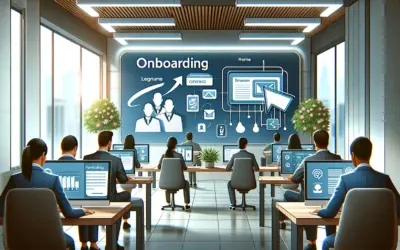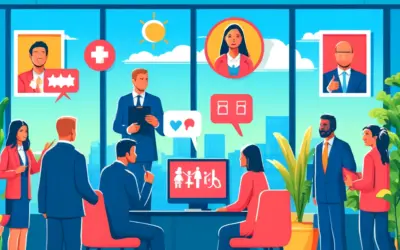The concept of Continuous Development is a cornerstone in modern business strategy, emphasizing constant improvement and learning within professional environments. Its integration into workplace culture fosters not only growth in individual competencies but also enhances overall organizational performance.
Key Principles of Continuous Development
Continuous Development is underpinned by several key principles that guide its implementation in the workplace. These include a commitment to lifelong learning, an adaptable mindset, and an emphasis on iterative progress. Employees are encouraged to approach tasks with a growth mindset, valuing feedback and viewing challenges as opportunities for personal and professional development.
Continuous Development Strategies
- Leveraging Learning Opportunities: Organizations can facilitate continuous development by providing various learning platforms, such as workshops, seminars, and online courses, catering to diverse learning preferences and needs.
- Mentorship Programs: Establishing mentorship programs can play a pivotal role in personal development, helping individuals gain insights and guidance from more experienced colleagues.
- Performance Reviews: Regular performance reviews and feedback sessions help employees understand their strengths and areas for improvement, aligning their personal goals with organizational objectives.
Impact of Continuous Development on Organizational Success
When executed effectively, Continuous Development translates into numerous benefits for an organization. It drives innovation by encouraging employees to constantly seek new knowledge and apply it within their roles. This proactive pursuit of improvement leads to higher job satisfaction, greater employee retention, and superior competitive advantage in the marketplace.
Incorporating Continuous Development practices into daily operations is a dynamic process that requires collaboration and commitment from all levels of an organization. By nurturing an environment that values continuous growth and learning, companies can ensure they remain resilient and agile in an ever-changing business landscape.
The Role of Employee Training in Organizational Growth
As businesses evolve in today’s fast-paced world, employee training emerges as a crucial element to the progressive expansion and development of any organization. The importance of equipping staff with the necessary skills and knowledge cannot be overstated, as it directly impacts productivity, adaptability, and ultimately, the bottom line. Below, we explore the multifaceted role that training plays in supporting and accelerating organizational growth.
Enhancing Workforce Competence and Efficiency
Employee training is imperative in maintaining a workforce that is competent and proficient. Regular training sessions ensure that employees stay current with industry trends, regulations, and technologies. This constant development of skills enables workers to perform their duties effectively and with greater confidence. An organization that invests in comprehensive skills development is more likely to enjoy higher productivity as employees are better equipped to handle their tasks, leading to a smoother, more efficient operational flow.
Fostering Innovation and Competitive Edge
Organizations that actively promote learning opportunities often find themselves at the forefront of innovation. Employee training not only teaches practical skills but also encourages creative thinking and problem-solving. By providing training that challenges and stimulates intellectual growth, companies can nurture a culture of innovation that contributes greatly to their competitive edge. A staff that is trained to think beyond the norm is a powerful asset, sparking breakthroughs that can redefine industry standards and catapult the organization ahead of rivals.
Building Employee Loyalty and Reducing Turnover
A focus on training illustrates an organization’s commitment to its workforce. When employees feel valued through the time and resources dedicated to their growth, they are more likely to develop a sense of loyalty to the company. This emotional investment can lead to reduced employee turnover, as well-trained employees typically experience greater job satisfaction and career fulfillment. Furthermore, employee retention is cost-effective as it reduces the need for constant recruitment and the loss of tacit knowledge that occurs when experienced employees leave.
Promoting Adaptability to Change
In an era where change is the only constant, adaptability is key to sustained organizational growth. Training programs designed to embrace flexibility can help staff shake off resistance to change and embrace new methods and processes. This agility allows a business to pivot quickly in response to market shifts without losing momentum. Enabling a workforce to adapt rapidly to changes not only maintains operational stability but also signals to the market that the organization is resilient and forward-thinking.
Creating a Sustainable Employee Training Program
Understanding the Needs of Your Workforce
To craft a sustainable employee training program, it is essential to begin by assessing the unique needs of your workforce. Engage with employees through surveys or focus groups to gain insight into the skills they feel are necessary for their growth and the company’s success. This understanding will serve as the foundation for a tailored training program that resonates with your team. Additionally, assessing current workforce competencies and future industry trends can ensure the program’s relevant and future-proof.
Conducting a Skills Gap Analysis
A thorough skills gap analysis can pinpoint the areas where training is most needed. By comparing current competency levels against the skills required for future roles and projects, employers can create effective training interventions. This data-driven approach ensures the program’s alignment with both employee aspirations and business objectives.
Aligning Training with Career Development
Employees are more motivated to engage in training programs that contribute to their career advancement. Establish clear pathways that show how acquiring new skills can lead to greater responsibilities and opportunities within the organization. This alignment enhances the perceived value of the training program, fostering a more enthusiastic and invested workforce.
Adopting Flexible Training Methods
Today’s dynamic business environment requires a training program that is as flexible as it is comprehensive. Incorporating a mix of traditional and modern learning methods such as e-learning, on-the-job training, and mentorship programs can cater to diverse learning preferences. Blended learning strategies ensure that employees can access training materials at their convenience and pace, which promotes a culture of continuous learning.
Leveraging Technology for Learning
Technology has transformed the way we learn, and incorporating it into your training program is no longer optional but a necessity. Utilize Learning Management Systems (LMS) to deploy, track, and manage training efforts efficiently. Interactive online courses and mobile learning apps enable employees to enhance their skills even when they’re on the move.
Individual Learning Paths
Every employee is unique, with different existing knowledge levels, learning speeds, and preferences. By creating individual learning paths, you empower employees to take charge of their development, fostering a sense of ownership and personal commitment to their learning journey.
Building a Culture of Continuous Improvement
For a training program to be truly sustainable, it must be ingrained in the company’s culture. Encourage a mindset of continuous improvement where feedback and constructive criticism are welcomed and acted upon. Regular reviews and updates of the training content ensure that the program remains relevant and effective in meeting both current and emerging business challenges.
Recognizing and Rewarding Progress
Acknowledging employees’ efforts and achievements in training can significantly boost morale and motivation. Implement a recognition system that celebrates milestones reached and competencies acquired. This recognition not only reinforces the behavior but also showcases the organization’s commitment to employee growth.
Measuring the Impact of Training
To ensure the longevity and sustainability of the training program, it is critical to measure its impact on performance and business outcomes. Utilize key performance indicators (KPIs) to quantify the benefits of the training and make data-driven decisions to enhance its effectiveness. This continual assessment can help fine-tune the program to better serve the evolving needs of the organization and its employees.
Measuring the Impact of Continuous Training Initiatives
Continuous training in the workplace has become an essential aspect of fostering employee growth and maintaining a competitive edge in today’s fast-evolving job landscape. Empowering employees with new skills ensures not only their individual professional development but also contributes to the collective progress of an organization. Investing in a culture of continuous learning can result in innovative ideas, more efficient work processes, and strengthened employee morale.
Key Metrics to Consider
When designing training initiatives, it’s crucial to establish clear metrics. These could include evaluating the increase in productivity, the quality of work, or even the employee retention rates post-training. The return on investment (ROI) of training programs is a vital metric that helps in understanding the financial impact of training efforts.
Evaluating Training Effectiveness Through Quantitative Analysis
Quantitative measures provide concrete data to assess the impact of continuous training. It often involves looking at performance records, conducting skills assessments, and using employee feedback surveys. These measures help to draw a clear line from the training provided to improvements or changes in work output. For instance, trainers may analyze the speed at which tasks are executed pre and post-training to gauge improvements.
Using Technology to Assess Performance
Incorporating technology into the assessment process, such as learning management systems (LMS) or analytics tools, helps in objectively evaluating the effectiveness of training programs. These platforms can often track a participant’s progress through modules and provide detailed reports on their engagement and comprehension levels.
Understanding The Qualitative Benefits of Continuous Training
But beyond the numbers, there’s a human element that can’t be overlooked. Qualitative analysis sheds light on the non-measurable outcomes of training. Engagement levels, employee satisfaction, and work culture are areas where the benefits of ongoing training might be most noticeable. Interviews and focus groups are effective methods for gaining personal insights from employees on the value of the training they received.
Promoting a Learning-Oriented Culture
There’s a compelling link between a company’s learning culture and its ability to innovate and adapt. This means that sometimes, the true measure of continuous training is seen in an organization’s resilience and adaptability to industry changes over time.
Establishing Sustainable Continuous Training Programs
For continuous training to be successful in the long term, it needs to be sustainable and well-integrated into the day-to-day of the business. This can be achieved by clearly outlining training goals that align with the strategic direction of the company and ensuring that they’re adaptable to the changing needs of both the workforce and the industry. Regular updates to training materials and methods based on both quantitative and qualitative feedback ensure that the training remains relevant and impactful.
Consistency and Commitment
Ultimately, it is the consistency and commitment from leadership to prioritizing continuous training that underpins successful initiatives. This means continuously measuring, refining, and valuing training as a critical investment into the workforce, akin to how one might approach any other key business strategy.
Technological Tools to Facilitate Ongoing Employee Education
Learning Management Systems (LMS)
Continued education and skill development are essential in maintaining a competitive edge in today’s rapidly changing job market. One of the most effective technological tools for facilitating employee education is the Learning Management System, or LMS. An LMS is a software application that provides a framework through which all aspects of a training program can be administered, documented, tracked, and delivered. Popular LMS platforms like Moodle, Blackboard, and Canvas offer customizable solutions that cater to the learning needs of diverse organizations. Employees can access a wide range of courses and resources, monitor their progress, and obtain certifications, all within a centralized online environment.
Mobile Learning Applications
With the increased reliance on smartphones for daily activities, mobile learning applications are becoming indispensable for on-the-go education. Apps like Udemy, Coursera, and Khan Academy provide users with the ability to learn new skills or improve existing ones directly from their mobile devices. These platforms often use engaging multimedia content, such as videos and interactive quizzes, to keep learners engaged. Mobile apps also offer flexibility, allowing employees to learn at their own pace and on their own schedule, which is invaluable for those with tight work commitments or personal obligations.
Collaborative Tools and Platforms
Collaboration is key in fostering a learning culture within an organization, and technology plays a vital role in facilitating it. Tools such as Slack, Microsoft Teams, and Google Workspace enable real-time communication and collaboration among employees. They provide platforms where teams can share resources, discuss ideas, and give feedback, which is crucial in an educational context. For example, a group of employees working on a joint project can use these tools to share research, coordinate tasks, and collectively solve problems, thereby enhancing both their teamwork and individual knowledge bases.
Webinars and Virtual Classrooms
Finally, webinars and virtual classrooms have become a mainstay in employee education, offering a personalized and interactive learning experience without geographical constraints. Platforms like Zoom, Webex, and Adobe Connect allow trainers to deliver live sessions that are accessible anywhere in the world, thus reaching a wider audience. These sessions can be recorded, enabling employees who couldn’t attend live to benefit from the educational content at their convenience. With features such as screen sharing, live polling, and Q&A, virtual classrooms mimic the traditional learning environment while adding the advantages of digital technology.













0 comentarios